Studio Visit
Fang Lijun Takes Us Inside His Beijing Studio, Where the Artist Listens to History Audiobooks While Painting His Now-Iconic Laughing Faces
The artist is currently preparing for an exhibition at Oxford’s Ashmolean Museum.
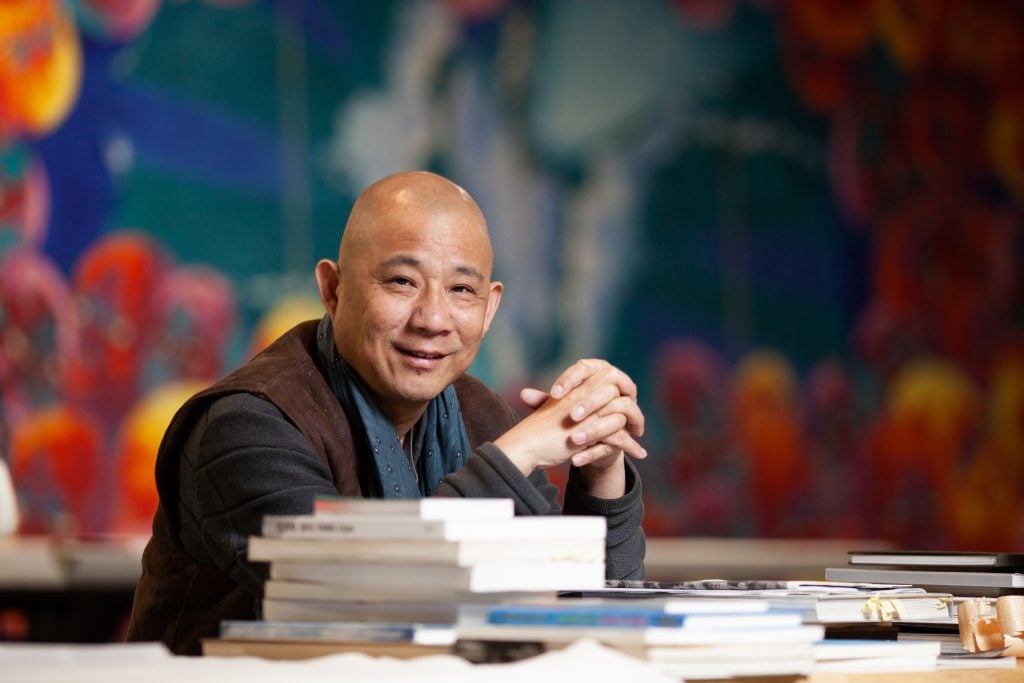
The artist is currently preparing for an exhibition at Oxford’s Ashmolean Museum.

Katie White

Famed Chinese artist Fang Lijun has been in the same studio for 30 years, moving into his Beijing studio in 1993. Over the decades that followed, Fang catapulted to a rare level of global fame, first coming to prominence in the 1990s as part of the Cynical Realism movement in the 1990s. His now-iconic paintings of bald-headed men laughing and contorting their faces were Pop-infused commentaries on a belief that associated baldness with stupidity and iniquity, as well as other superstitions.
While these striking paintings are most closely associated with Fang, the artist’s practice is widely varied and continues to evolve. Earlier this summer, a curation of the artist’s ceramic sculpture, drawing, and prints was on view at London’s Eskenazi Limited, in Fang’s first-ever solo presentation in the U.K. Now, the artist is preparing for a solo exhibition at Oxford’s Ashmolean Museum, which will open this October. These exhibitions have called for full days in Fang’s Beijing studio as well as trips out to a secondary ceramics studio in China’s historic Jingdezhen region.
But even with a jam-packed calendar, Fang still likes to cut loose when he can, meeting up with his friends in the evenings, and, whenever possible, heading out on the open road—these trips the artist considers another essential aspect of his practice.
Recently we spoke with Fang, who invited us to take a peek into his studio.
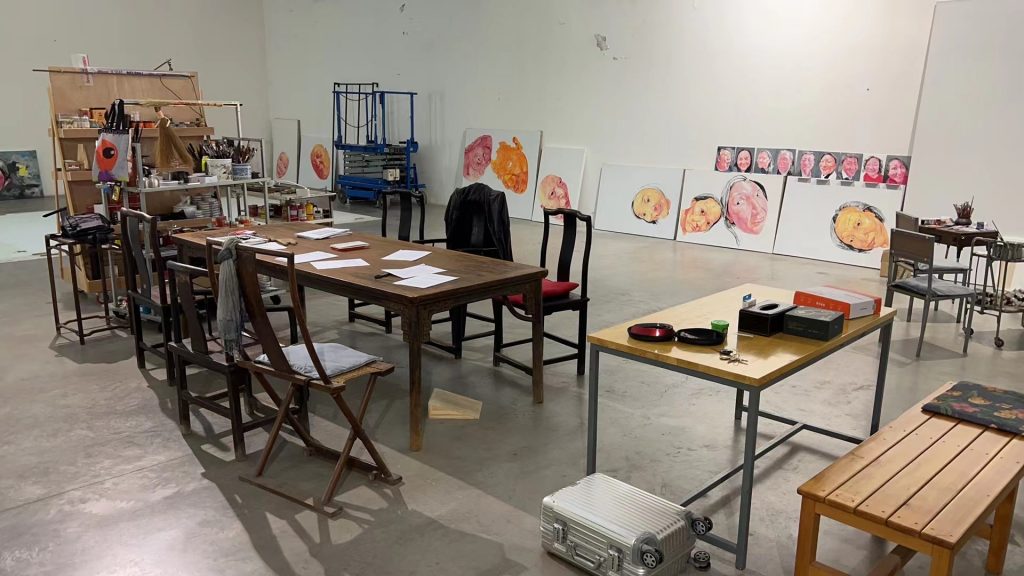
Fang Lijun’s studio. Courtesy of the artist.
Tell us about your studio. Where is it, how did you find it, what kind of space is it, etc.?
I work mainly in my studio in Songzhuang, Beijing, where I’ve been since 1993. Thousands of artists now live and work in this area. Of course, back then, when I relocated to here, there were no artists here.
I also have a second studio in Jingdezhen focused on creating ceramic works. Jingdezhen has a long tradition of ceramic production, with kiln fires burning there uninterrupted for over a thousand years. And there are excellent services for producing ceramic—including porcelain clay, glaze, tools, technicians, and so on. It is a paradise for ceramic-related creations.
Do you have studio assistants or other team members working with you?
Yes, teamwork is essential in the creation of ceramics and prints.

Fan Lijun’s studio. Courtesy of the artist.
How many hours do you typically spend in the studio, what time of day do you feel most productive, and what activities fill the majority of that time?
I enjoy working. That’s why I have my living area together with the studio. So, except for the time I am going out, I am in the studio all day long. I write and create ink paintings, oil painting, printmaking, ceramics…each work stage alternates on a schedule. I find shifting between different types of work is the best rest.
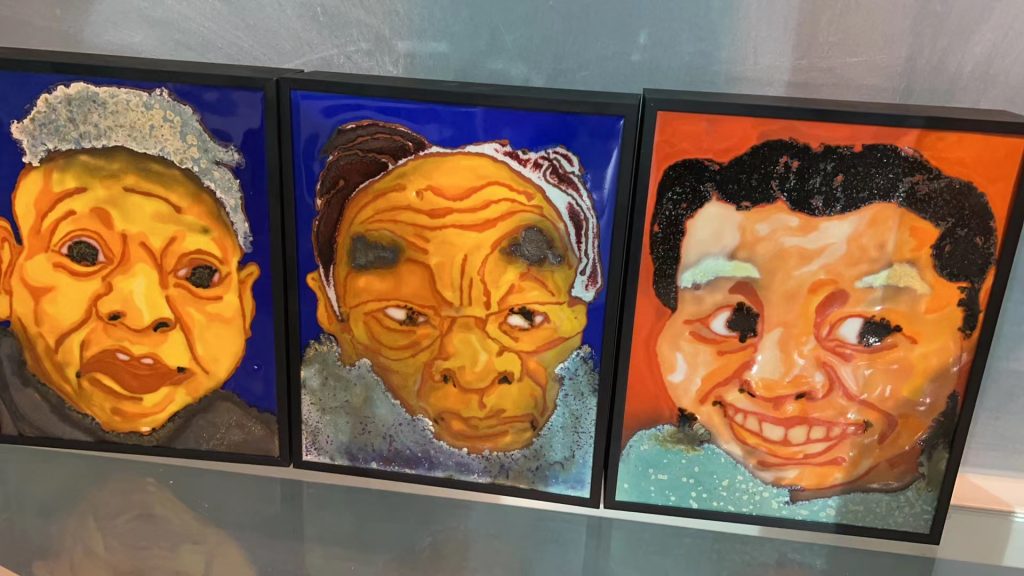
Ceramic paintings by Fang Lijun. Courtesy of the artist.
What is the first thing you do when you walk into your studio (after turning on the lights)?
Usually, I drink tea and practice Chinese calligraphy.
What is a studio task on your agenda this week that you are most looking forward to?
Right now, I am working on the implementation of some details of my upcoming solo exhibition at the Ashmolean Museum in Oxford.
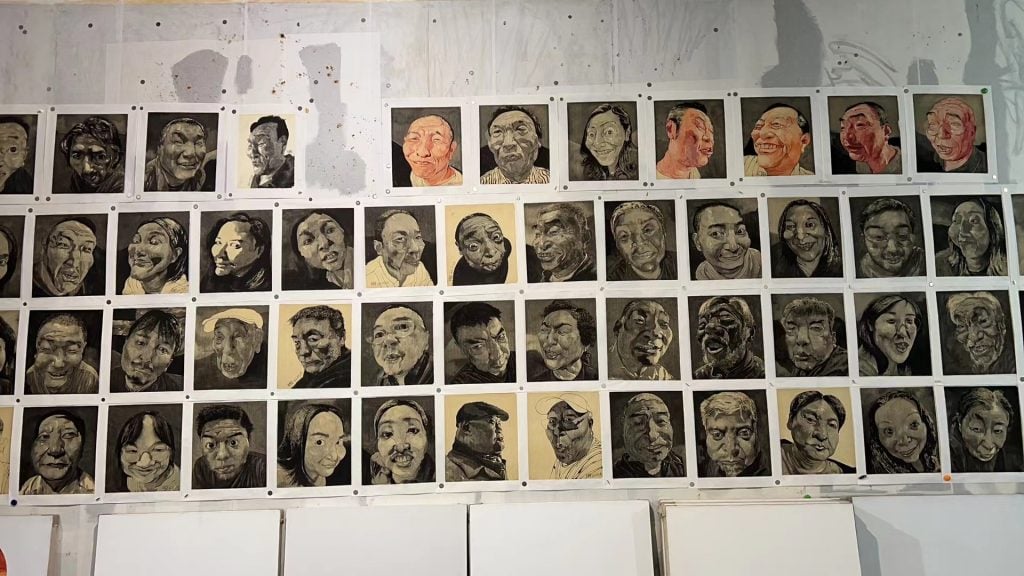
Fang Lijun’s studio. Courtesy of the artist.
What tool or art supply do you enjoy working with the most, and why? Please send us a snap of it.
I am open to all kinds of tools or art supplies. I don’t set limits to it. Among these are my trolley of ink painting supplies, self-made brushes, and an adjustable electronic workbench.
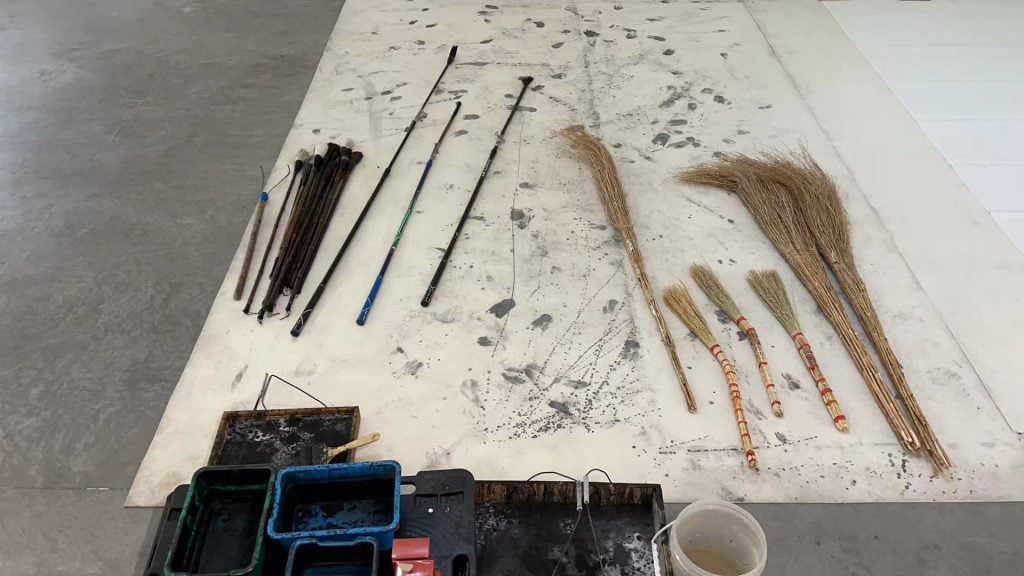
The artist’s self-made brushes. Courtesy of the artist.
What kind of atmosphere do you prefer when you work? Is there anything you like to listen to/watch/read/look at etc. while in the studio for inspiration or as ambient culture?
I have two ways of working, one working inside my studio, and the other is working during my travel. I love going on road trips, researching, visiting friends, and having gourmet food—it becomes part of my practice. When I work, I mostly listen to history audiobooks. The artist is discussing the common concerns of human beings in his or her unique art language. For me, the creator and the viewer are not in opposition to each other.
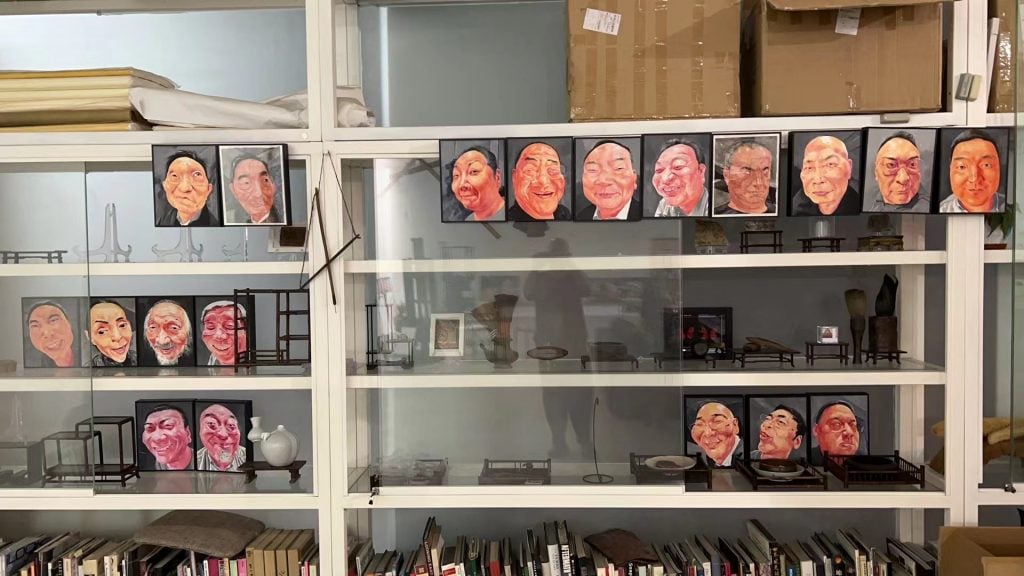
Fang Lijun’s studio. Courtesy of the artist.
What do you think an artwork should do? How do you know when a work is clicking? What feeling do you look for?
When dealing with artists’ creations, society mostly demands that the artworks have to look good and be pleasant to the eyes. This is what we would normally expect from an artist. We would normally assume that the artist’s job is to serve the eye, to create something that brings visual pleasure. I believe visual pleasure is of course, very important, it is harmful if we always see things that are discomforting. Besides, art creation contains other needs, for example, about humanity, about life, and about the psychological aspects.
First, pain is the most important vital sign—if you can’t feel pain it’s hard to call it life. Second, pain is a reaction to love and care. None of us feels pain for something we don’t care about or have no connection with. In fact, to create art from pain is full-fledged love. Therefore, I think that besides serving visual pleasure, art is more important to serve humanity and human emotions.
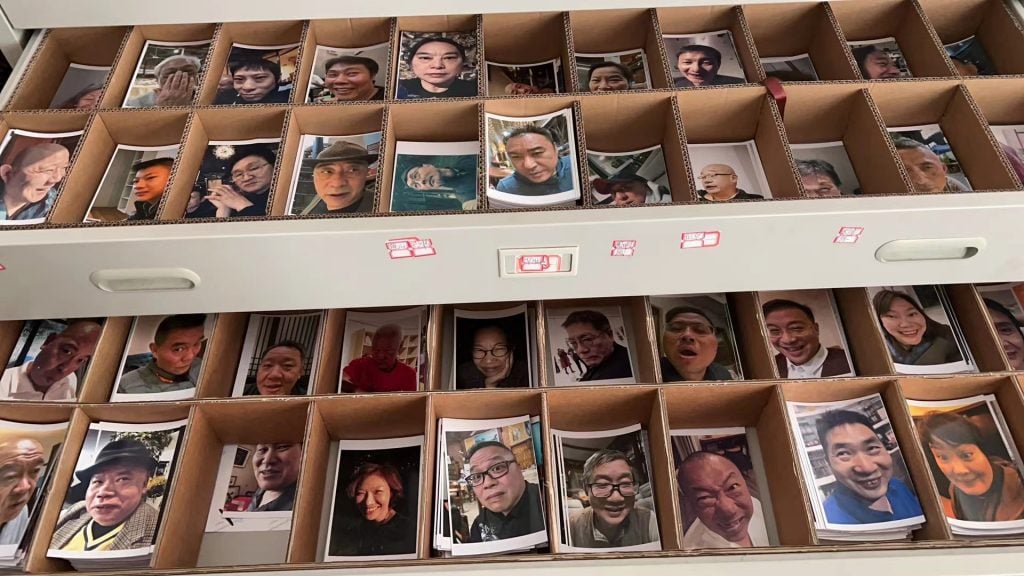
Fang Lijun’s collection of photographs Courtesy of the artist.
What images or objects do you look at while you work?
I like to take pictures while hanging out and drinking with my friends.
What is the fanciest item in your studio? The most humble?
I only keep materials—my tools and art supplies—in my studio.
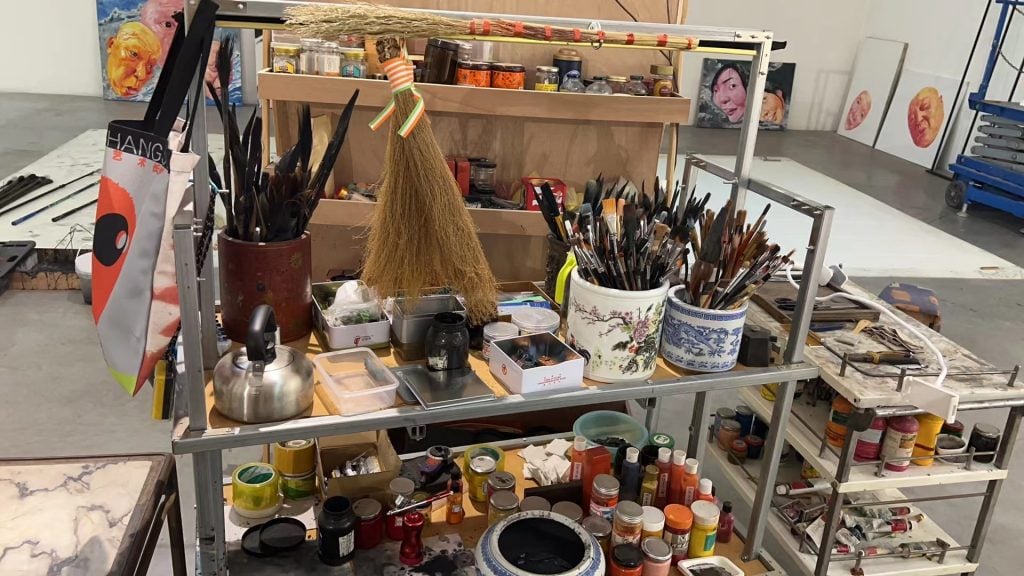
Fan Lijun’s tools. Courtesy of the artist.
How does your studio environment influence the way you work?
The layout of the studio is arranged around my recent work and will only affect my work in partial, detailed aspects. Once there is a significant adjustment in the work content, the studio will make a corresponding adjustment.
Describe the space in three adjectives.
Practical, convenient, and casual.
What do you like to do after wrapping up a day in the studio?
I go meet up with friends.